Exploring Multicultural Literature with a Focus on Family
By Janine M. Schall
After receiving a grant from the National Council of Geographic Education, I worked in a Montessori charter school for a semester in order to help students explore their own cultures and those of others through engagements with multicultural and international literature. While I also incorporated geographic concepts such as relating the five themes of geography to student lives and to the mapping of familiar locations, for this vignette I share just one part of our work together: the exploration of families. While we focused on our own families, we also discussed how other people live by reading a variety of multicultural literature and sharing our exploration.
The classroom consisted of 25 first through third grade students. While the majority were white European-Americans, the class included one Asian-American, two Arab-Americans and one multiracial (African-American and white) child. Although most belonged to mainstream Protestant religions, there were also some religious differences among the students with two Jewish students, one Wiccan, one Muslim, and two Sikh children. I was a familiar figure to the students since I was a part time Title I teacher at the school and a regular substitute teacher. For this experience I spent three half-days in the classroom each week for the fall semester. Because I wanted students to share these explorations with their families, I sent informational letters home at the beginning of each major engagement explaining what we would be doing in class and asking parents to support our learning by talking with the children about what we were doing.
Our explorations of families centered around children’s literature that represented a wide variety of family structures, situations, and cultures. I read aloud a new book at least once a week and discussed it with the whole group. I also brought in a text set of picture books that the children could use for independent reading (see figure 1 for a sample of the text set) and added to this collection each time we began a new engagement. Most of the students were enthusiastic readers and were eager to explore the text set since their own classroom library was fairly small. They used the text set heavily, reading independently and with friends, and recommending books to each other.
Three major engagements accompanied the experiences with children’s literature. As we read children’s books, the students also participated in making a Memory Museum, writing family stories, and recording family recipes.
Personal Connections through a Memory Museum
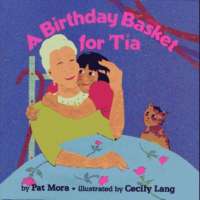 We began the explorations of families by encouraging personal connections to the theme through the creation of a Memory Museum. I read A Birthday Basket for Tia by Pat Mora (1992) as the whole class sat on the floor during circle time. In this picture book, Cecilia gathers a basketful of items that represent the loving relationship she has with her great-aunt in order to create a special gift for the great-aunt’s 90th birthday. After the students briefly discussed the book by making personal connections to birthday parties of their own, I reminded the students how Cecilia collected precious items and showed the class several things that had personal meaning to me. These included a photograph of my grandmother when she was a young woman and a wood carving from Ireland. I told the children why these items were important to me, and then invited the children to think about things from their own lives that showed something important about themselves and their families. We discussed ideas for a few minutes, then I asked the students to talk with their parents about what they could bring to school for our next work session. Before our time together ended, I showed the students two other books that had a similar focus as A Birthday Basket for Tia; Aunt Flossie’s Hats (and Crab Cakes Later) (Howard, 1991) and Wilfrid Gordon McDonald Partridge (Fox, 1984). These books were added to the text set on families.
We began the explorations of families by encouraging personal connections to the theme through the creation of a Memory Museum. I read A Birthday Basket for Tia by Pat Mora (1992) as the whole class sat on the floor during circle time. In this picture book, Cecilia gathers a basketful of items that represent the loving relationship she has with her great-aunt in order to create a special gift for the great-aunt’s 90th birthday. After the students briefly discussed the book by making personal connections to birthday parties of their own, I reminded the students how Cecilia collected precious items and showed the class several things that had personal meaning to me. These included a photograph of my grandmother when she was a young woman and a wood carving from Ireland. I told the children why these items were important to me, and then invited the children to think about things from their own lives that showed something important about themselves and their families. We discussed ideas for a few minutes, then I asked the students to talk with their parents about what they could bring to school for our next work session. Before our time together ended, I showed the students two other books that had a similar focus as A Birthday Basket for Tia; Aunt Flossie’s Hats (and Crab Cakes Later) (Howard, 1991) and Wilfrid Gordon McDonald Partridge (Fox, 1984). These books were added to the text set on families.
The next time we met the children came to circle accompanied by a wide variety of items, from stuffed animals to a live rabbit. While it was difficult to keep the children from immediately sharing, I encouraged them to save their items for sharing during the museum exhibition. We discussed their experiences with museums and how we needed labels for our museum exhibits. I handed out blank labels and the students decided what they wanted to share. After we arranged the exhibits and their labels in a nearby empty room, groups of children took turns visiting the museum and looking at the exhibits. In my teaching journal I describe the experience:
Groups of eight at a time came out with me to view the museum. They all immediately searched for the items they brought in (I asked for 1-2, some kids brought up to 4). The students spent much longer examining the museum than I thought they would. I expected a quick in and out tour from most of them, but they carefully looked at each item, and, with permissions from the owner, touched or picked up many of them.
There was a lot of talking, with kids asking each other what they brought in and why and sharing memories. I was pleased that everyone was respectful of what others displayed. The memory museum became a touchstone event for us, with students referring back to the experience and to the items they brought in throughout the entire time we worked together.
Exploring Family Stories
After our experience with the Memory Museum, we spent two weeks discussing and writing family stories. On our first day with this focus I only had a brief time with the students due to parent/teacher conferences. We met in circle and I read aloud “Aunt Sue’s Stories” by Langston Hughes. We talked together about who tells stories in our families, with students mentioning grandparents, older siblings, and parents. I next read I Love You Like Crazy Cakes (Lewis, 2000) about a woman traveling to China to pick up her adopted daughter. We then discussed different kinds of stories that people tell, with students mentioning stories about losing your tooth or being adopted. At our next session I read aloud My Great-Aunt Arizona (Houston, 1992). In this book the narrator tells the story of his great-aunt’s life from her childhood to her work as a teacher. As the class discussed the book, we also talked about what kinds of stories we could tell about our own families, like the narrator was doing. Then I told the story of how my grandparents got engaged. In my teaching journal I wrote:
The class liked the book and had lots of questions about the pictures. They loved my story and when I suggested they might have stories of their own about their grandparents or other relatives I could see them begin to get excited. Hands shot up and people wanted to share.
Next I read aloud Sophie (Fox, 1994), a story about the loving relationship between a girl and her grandfather from the girl’s birth until the grandfather’s death. Our discussion of the read aloud initially focused on the folk-style illustrations with their exaggerated features which some students thought were weird. After some time spent reexamining the illustrations, I moved the discussion to talk about grandparents. Several students shared memories and stories about their grandparents. Nathaniel asked if stories about pets were ok, and when I said that they were, asked me if I had a pet story. I told the class about raising gerbils when I was their age. Before I left for the day I asked them to think of a story to share with the class during our next session. I also introduced other books with a theme of family stories for the text set. These included Grandfather’s Journey (Say 1993), Bigmama’s (Crew, 1991) and How My Family Lives in America (Kuklin, 1992).
In our next session we had a storytelling circle. I described it in my teaching journal:
Stories, stories, stories today! In whole group circle we shared family stories, with everyone getting a chance to tell one story. I was anticipating stories about grandparents and what parents did when they were kids. Instead we had lots of stories about pets. My first thought was that they were influenced by the story I told about my gerbils, but I also told a story about my grandparent’s engagement. I think they just chose what was important to them—pets in most cases. Several students passed when it was their turn to share and several people desperately wanted to share more. After everyone had a chance to tell one story I sent them off to write their story down, but told the ones that wanted to continue to stay. Malyn, Amber, Sedona, Sam and Tara stayed. Malyn didn’t tell a story whole group and she didn’t tell one small group either, but she was very interested in listening.
Students worked on initial drafts that morning and the following day, with some students deciding to write more than one story. At our next session I asked them to read their stories aloud to at least one other student who provided comments and suggestions for improvement. After revising, students completed their final versions. Dawn, a first grader wrote:
When I got my goat at a goat sale. Once I saw a goat herd and I got to pick out my present because I wanted something to myself because my little sister wants everything that I get. I went to the goat herd and there was a whole bunch of goats. I picked out a goat and I named him Eager. He was six months old but now he is one. He lives in my corral with my other animals. I love my goat. He growed up almost to my sister. She is three feet. His mom was named Bee. He is still alive and I love him.
Sam, a second grader, wrote:
Once three days before I was born my dad was going fishing with his friend. His friend’s name was Alan. His friend had a bad disease and it killed him. Then three days later I was born and since he died my middle name is Alan.
Another second grader, Alia, wrote:
One day my mom was walking home from school and a crow came and pecked on her head and another and another and another and a lot until she ran home and one got stuck in the door. And it got whacked in the nose. After that she always watched for crows and if she saw one she ran home.
I arranged the stories into a class book. The next time we met I introduced the book to the students and several students volunteered to read aloud their stories and talk about them with the class. We discussed how many of the family stories had common themes and how some stories were similar to the books in the text set. The family story book then became a permanent part of the classroom library, where it was one of the most popular books for independent reading time.
Food as Family Tradition and Celebration
In our last focused engagement on family, I read aloud Family (Monk, 2001). In this book a multiracial girl attends a reunion of her mother’s family, bringing with her a special treat from her Dad’s side of the family. One student remarked that the book character had a white parent and an African-American parent just like she did. Many students loudly expressed their negative opinions about the special treat—whole pickles with a peppermint stick inserted in the middle of each. After we talked about how everyone likes different food and how the students were reacting the same way that the kids at the reunion initially reacted, we moved on to talking about special foods that our families make and share. I then asked students to talk to their parents about their family’s special foods and to write down a recipe and why it was special. Before leaving for the day I introduced several other books about family and food for the text set, including The Ugly Vegetables (Lin, 1999), Let’s Eat! What Children Eat Around the World (Hollyer, 2003) and Jalapeño Bagels (Wing, 1996).
Over the next two sessions students brought in their family recipes. In whole group sharing time we talked about each recipe. Sam brought in a recipe that reflected his Jewish heritage (see figure 5). Anwyn shared a food that she always ate when she visited her grandmother in Germany (see figure 6). Luna brought a recipe that she regularly made with her father (see figure 7). We added this recipe book to the classroom library.
Finally, I collected the recipes into a class book, which made a popular addition to the classroom library.
Conclusions
The students participated enthusiastically in these engagements and whenever they saw me at the school they asked when I would next be coming to their classroom. They enjoyed thinking and sharing about their own lives and were just as eager to hear about how their classmates lived and how book characters handled the same things the students were talking about in class.
Our explorations of culture, family and self also strengthened the connection between home and school. Students were encouraged to talk with their families about what we were doing and to bring their home experiences into the classroom. Students knew that their home experiences were valued because we showed how important they were through engagements that privileged the home experience. Because we also read a great deal of multicultural literature that showed how other people live, the students were able to compare their lives with the lives of others. This both provided the necessary contrast so that students could see the unique aspects of their own cultures and also showed other perspectives and ways of being.
Some students did have difficulty with the literature outside of their own experience. While they were very respectful of the differences in children in their own classroom, the lives and experiences of book characters did not always receive the same respect from some children. We spent a great deal of time talking about why people did things in certain ways and how it compared to students’ own lives, emphasizing how differences were normal and interesting, rather than weird.
After our experiences exploring family and culture, the students went on to explore other cultures more formally with the regular classroom teacher. With the foundation of understanding their own cultures, they were able to realize how other people live isn’t exotic or weird, but different and understandable within their particular context.
Children’s Literature Cited
Ada, A.F. (2002). I love Saturdays y domingos. Ill. by Elivia Savadier. New York: Atheneum.
Crews, D. (1991). Bigmama’s. New York: Greenwillow.
Fisher, V. (2002). My big brother. New York: Atheneum.
Fox, M. (1994). Sophie. Ill. by Aminah Brenda Lynn Robinson. New York: Scholastic.
Fox, M. (1984). Wilfrid Gordon McDonald Partridge. Ill. by Julie Vivas. New York: Kane/Miller.
Girard, L.W. (1987). At Daddy’s on Saturday. Ill. by Judith Friedman. Morton Grove, IL: Albert Whitman.
Hollyer, B. (2003). Let’s Eat! What children eat around the world. New York: Henry Holt.
Houston, G. (1992). My great-aunt Arizona. Ill. by Susan Condie Lamb. New York: HarperCollins.
Howard, E.F. (1991). Aunt Flossie’s hats (and crab cakes later). Ill. by James Ransome. New York: Clarion.
Kuklin, S. (1992). How my family lives in America. New York: Aladdin.
Lewis, R. (2000). I love you like crazy cakes. Ill. by Jane Dyer. New York: Little Brown.
Lin, G. (1999). The ugly vegetables. Watertown, MA: Charlesbridge.
Monk, I. (2001). Family. Ill. by Janice Lee Porter. Minneapolis: Carolrhoda.
Mora, P. (1992). A birthday basket for Tia. Ill. by Cecily Lang. New York: Simon & Schuster.
Newman, L. (2000). Heather has two mommies. Ill. by Diana Souza. New York: Alyson Wonderland.
Nye, N.S. (1994). Sitti’s secrets. Ill. by Nancy Carpenter. New York: Simon & Schuster
Say, A. (1993). Grandfather’s journey. New York: Scholastic
Sonneborn, R.A. (1970/1987). Friday night is Papa night. Ill. by Emily A. McCully. New York: Puffin.
Wing, N. (1996). Jalapeño bagels. Ill. by Robert Casilla. New York: Atheneum.
Woodson, J. (2002). Our Gracie Aunt. Ill. by Jon J. Muth. New York: Atheneum.
Janine M. Schall is an assistant professor at the University of Texas-Pan American. She coordinates the graduate reading program and teaches courses in children’s literature and reading.
WOW Stories, Volume III, Issue 1 by Worlds of Words is licensed under a Creative Commons Attribution-NonCommercial-ShareAlike 4.0 International License.
Based on a work at https://wowlit.org/on-line-publications/stories/storiesiii1/.

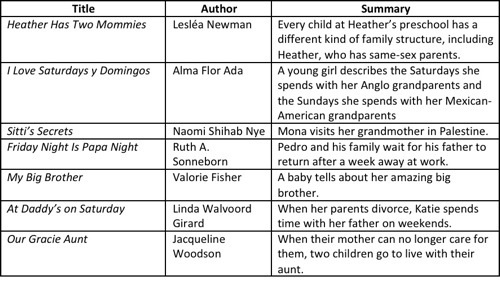
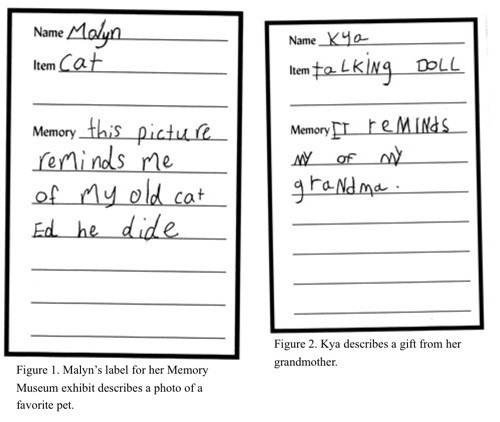
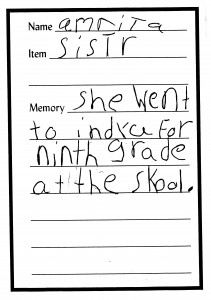
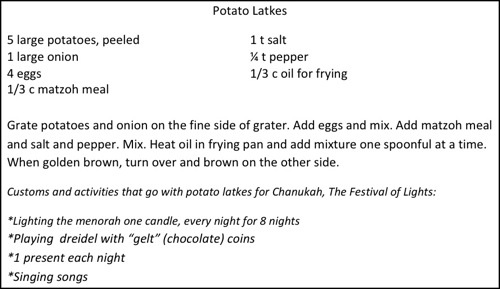
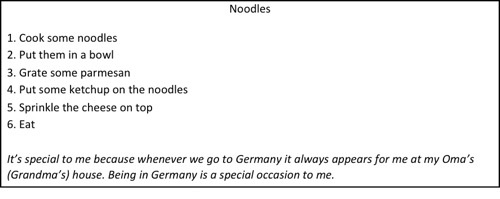
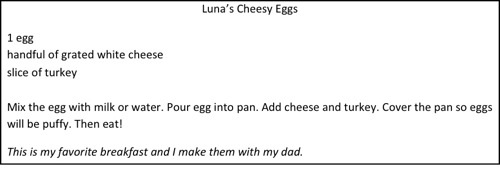
One thought on “WOW Stories: Connections from the Classroom”
Comments are closed.